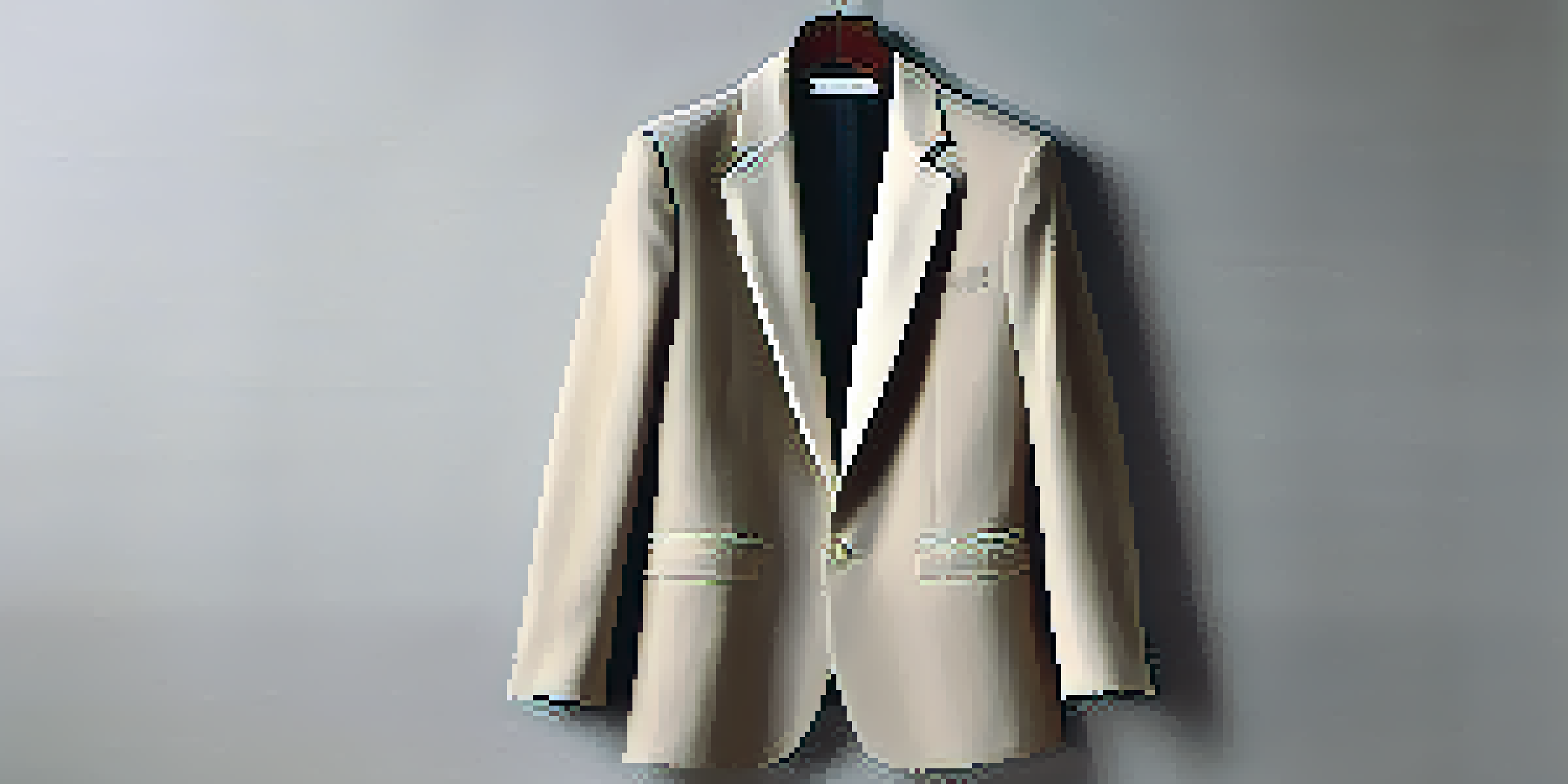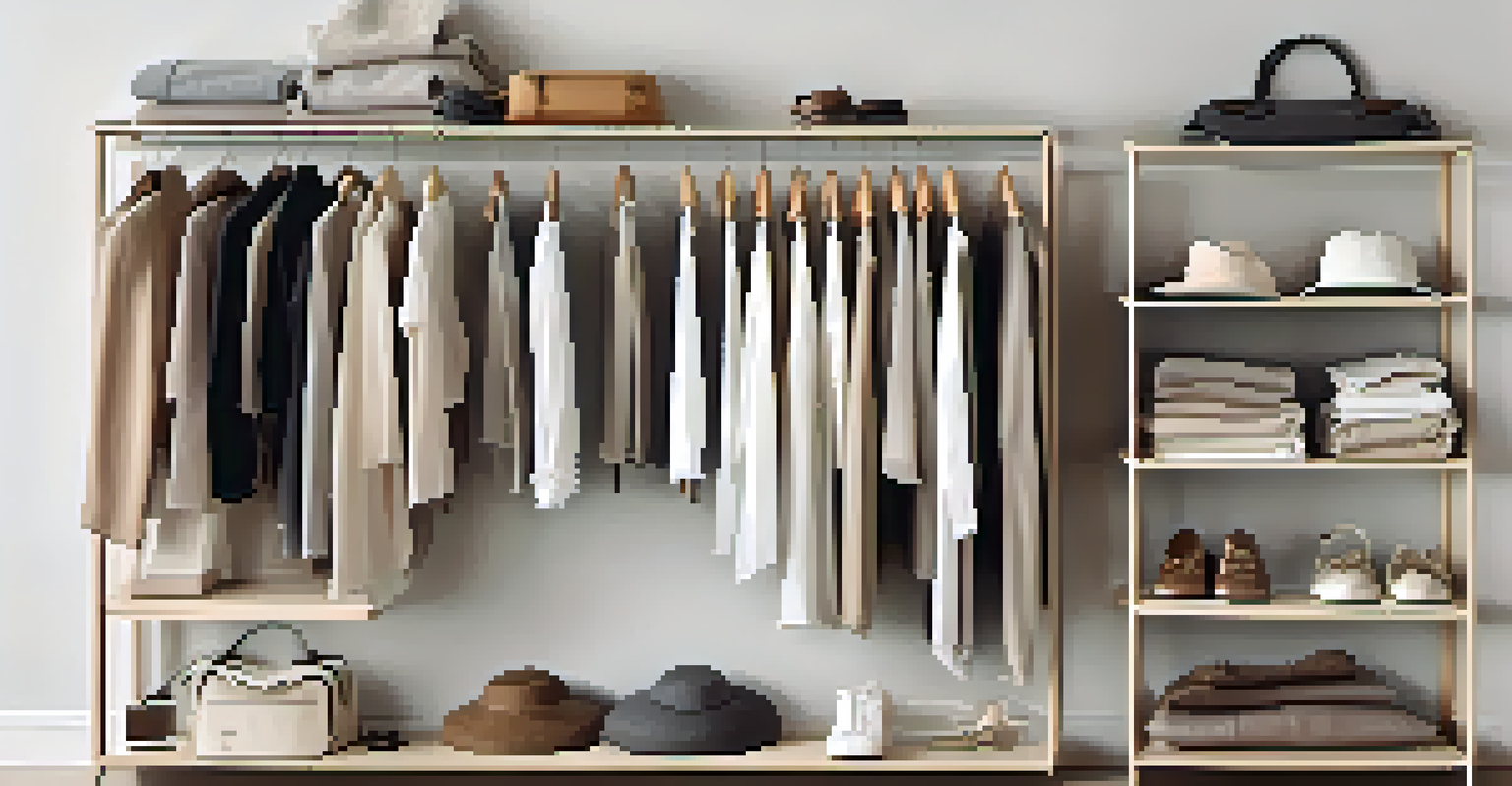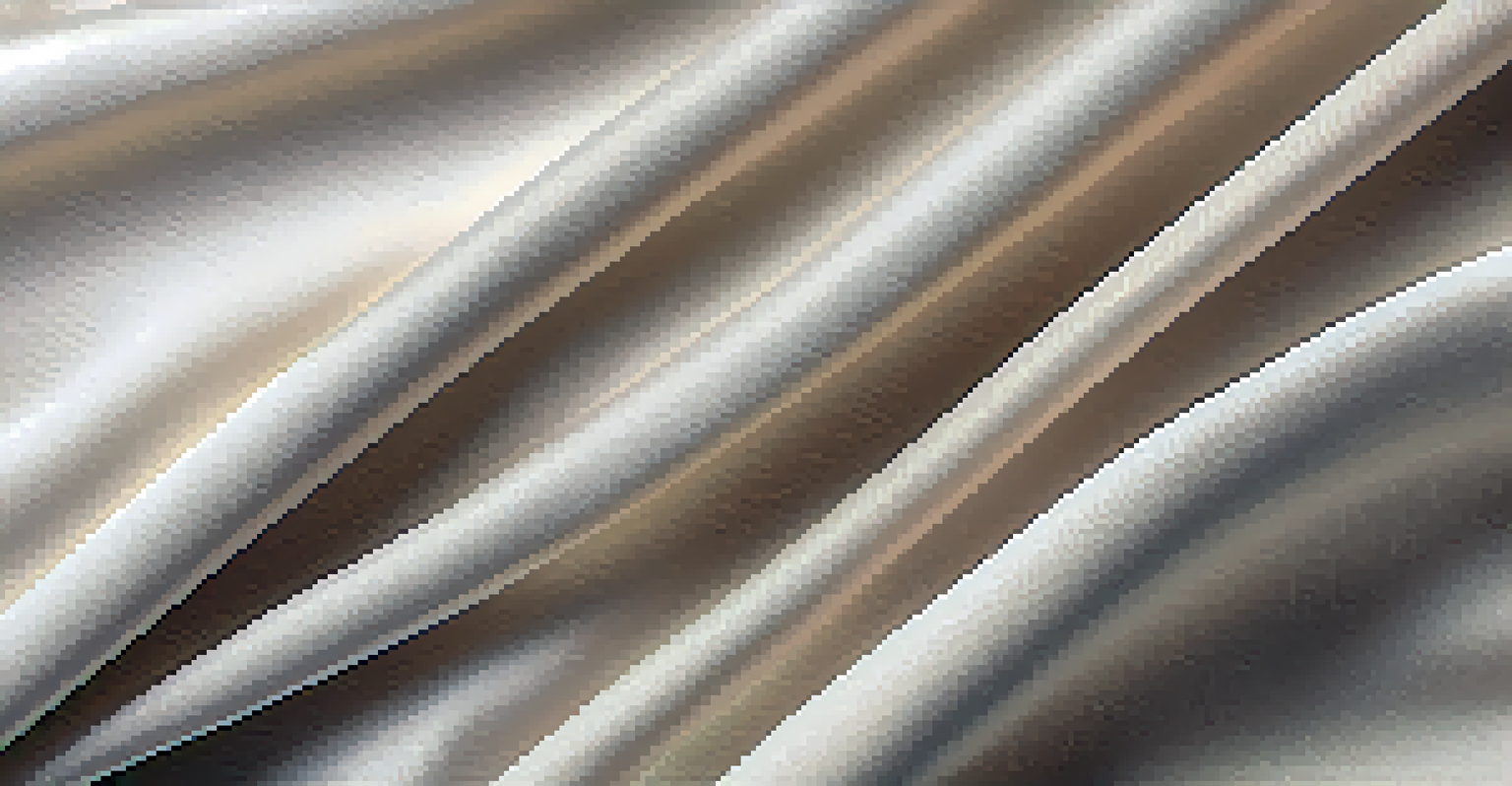How Minimalism Influences Fashion Design and Aesthetics

Understanding Minimalism: A Brief Overview
Minimalism is more than just a design trend; it's a lifestyle choice that emphasizes simplicity and functionality. Originating in the mid-20th century, this movement encourages reducing excess and focusing on the essentials. In fashion, this translates to clean lines, neutral palettes, and an overall sense of calmness in design.
Simplicity is the ultimate sophistication.
The essence of minimalism is captured in the phrase 'less is more.' By stripping away unnecessary elements, designers can highlight quality materials and craftsmanship. This approach not only enhances aesthetic appeal but also promotes sustainability by encouraging consumers to invest in timeless pieces rather than fast fashion.
As we delve deeper into how minimalism influences fashion, we will see its effects on everything from color choices to silhouette designs. The minimalist ideology invites both designers and consumers to rethink their relationship with clothing, fostering a deeper appreciation for the art of simplicity.
The Role of Color in Minimalist Fashion
Color plays a pivotal role in minimalist fashion, often leaning towards muted and neutral tones. Think whites, blacks, grays, and earth tones that evoke a sense of tranquility and sophistication. This choice not only makes outfits versatile but also allows the wearer’s personality to shine through without the distraction of bold patterns or colors.

By focusing on a limited color palette, designers can create cohesive collections that are easy to mix and match. This encourages a more thoughtful approach to dressing, where each piece works harmoniously with others. As a result, minimalist wardrobes often feature fewer but higher-quality items, embodying the principle of intentional living.
Minimalism Emphasizes Quality Over Quantity
Minimalist fashion prioritizes high-quality materials and craftsmanship, encouraging consumers to invest in timeless pieces.
Moreover, the use of color in minimalist fashion often reflects the emotional states of wearers. Soft pastels can evoke calmness, while deep hues may convey confidence. This intentionality in color choice aligns perfectly with the minimalist ethos of expressing individuality through simplicity.
Simplicity in Silhouette and Structure
Minimalist fashion is characterized by sleek silhouettes and structured designs that prioritize both comfort and functionality. This means fewer frills and embellishments, allowing the cut and fit of the garment to take center stage. Designers focus on creating pieces that flatter the body without overwhelming it with excessive details.
The less you own, the less that owns you.
For instance, a well-tailored blazer or a simple shift dress can make a powerful statement without being overly complicated. By embracing straight lines and geometric shapes, minimalist fashion emphasizes the beauty of form and function. This approach not only simplifies the design process but also makes dressing easier for the consumer.
Additionally, minimalist silhouettes often promote confidence and ease of movement. When clothing is designed with simplicity in mind, it becomes more wearable and accessible to a variety of body types. The result is a collection of timeless staples that never go out of style, making them a staple in many wardrobes.
Material Choices: Quality Over Quantity
In the world of minimalist fashion, material selection is crucial. Designers often prioritize high-quality fabrics that stand the test of time, such as organic cotton, linen, and silk. This commitment to quality not only enhances the aesthetic appeal but also aligns with sustainable practices, as fewer but better-made garments are produced.
Minimalism encourages a focus on craftsmanship, where the texture and feel of the material are just as important as the design itself. This often leads to the use of natural fibers that offer comfort and durability, making each piece an investment rather than a fleeting trend. Consumers are thus encouraged to appreciate the subtle nuances of each fabric.
Color and Simplicity Define Minimalist Style
A limited color palette and streamlined silhouettes foster a sense of tranquility and sophistication in minimalist fashion.
Moreover, the choice of materials in minimalist fashion can also reflect a brand's values. Eco-friendly fabrics or ethical production processes resonate with conscious consumers who prioritize sustainability. This alignment between material choice and ethical considerations adds another layer of depth to minimalist fashion, making it not just a style choice but a lifestyle commitment.
The Influence of Minimalism on Fashion Trends
Minimalism has had a profound impact on various fashion trends, often steering them toward a more understated aesthetic. As consumers become increasingly aware of the environmental and social implications of their purchases, there’s a growing shift towards timeless styles that resist the fast fashion cycle. This trend encourages designers to create collections that are not only stylish but also sustainable.
The 'capsule wardrobe' is a prime example of this influence, promoting the idea of investing in a few versatile pieces that can be mixed and matched. This approach not only simplifies choices but also reduces waste, as consumers are encouraged to buy less but choose wisely. The minimalist trend thus fosters a deeper appreciation for quality and longevity in fashion.
As minimalist principles gain traction, we see a rise in brands that embody these values, creating spaces where simplicity reigns supreme. From high-end designers to affordable fashion lines, the minimalist aesthetic is reshaping how we view and consume clothing, making it more about personal expression than fleeting trends.
The Emotional Impact of Minimalist Fashion
Minimalist fashion extends beyond aesthetics; it also has a powerful emotional impact on both wearers and designers. Wearing simple, well-crafted pieces can evoke feelings of calmness and clarity, helping individuals express their identity without the distractions of overly complex designs. This emotional connection can create a sense of confidence and peace in one's personal style.
For designers, the minimalist approach often fosters creativity and innovation, allowing them to focus on the essentials of their craft. By stripping away the noise, they can explore new ways to express form, texture, and color. This often leads to more meaningful creations that resonate deeply with audiences, enhancing the emotional experience of fashion.
Sustainable Choices Shape Fashion Trends
The minimalist approach promotes sustainable fashion practices and encourages thoughtful consumption, leading to the rise of capsule wardrobes.
Furthermore, the simplicity of minimalist fashion encourages mindfulness in consumption. It invites consumers to reflect on their choices, leading to a more intentional relationship with clothing. This emotional journey reinforces the idea that fashion is not just about appearance, but also about self-expression and personal values.
The Future of Minimalism in Fashion Design
As we look to the future, minimalism in fashion design is likely to continue evolving, adapting to changing consumer needs and environmental challenges. We can expect to see a rise in innovative materials and sustainable practices that align with minimalist principles. Designers will increasingly prioritize not just aesthetics but also the impact of their creations on the world.
Moreover, technology may play a vital role in shaping the future of minimalist fashion. From 3D printing to virtual fashion shows, these advancements could allow for more personalized and sustainable designs. This fusion of technology and minimalism can lead to exciting new avenues for self-expression, making fashion more accessible and inclusive.

Ultimately, the future of minimalism in fashion is bright, with endless possibilities for creativity and sustainability. By embracing simplicity and intentionality, designers and consumers alike can cultivate a fashion landscape that values quality, purpose, and individuality. The journey of minimalism in fashion is just beginning, and it promises to reshape how we view style in the years to come.